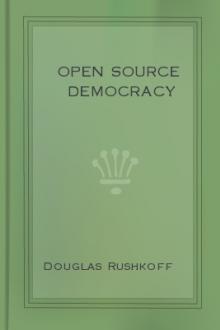The Library, Andrew Lang [online e book reading txt] 📗

- Author: Andrew Lang
- Performer: -
Book online «The Library, Andrew Lang [online e book reading txt] 📗». Author Andrew Lang
Following the categories into which M. Brunet classifies desirable books in his invaluable manual, we now come to books printed on vellum, and on peculiar papers. At the origin of printing, examples of many books, probably presentation copies, were printed on vellum.
There is a vellum copy of the celebrated Florentine first edition of Homer; but it is truly sad to think that the twin volumes, Iliad and Odyssey, have been separated, and pine in distant libraries. Early printed books on vellum often have beautifully illuminated capitals.
Dibdin mentions in “Bibliomania” (London, 1811), p. 90, that a M.
Van Praet was compiling a catalogue of works printed on vellum, and had collected more than 2000 articles. When hard things are said about Henry VIII., let us remember that this monarch had a few copies of his book against Luther printed on vellum. The Duke of Marlborough’s library possessed twenty-five books on vellum, all printed before 1496. The chapter-house at Padua has a “Catullus” of 1472 on vellum; let Mr. Robinson Ellis think wistfully of that treasure. The notable Count M’Carthy of Toulouse had a wonderful library of books in membranis, including a book much coveted for its rarity, oddity, and the beauty of its illustrations, the “Hypnerotomachia” of Poliphilus (Venice, 1499). Vellum was the favourite “vanity” of Junot, Napoleon’s general. For reasons connected with its manufacture, and best not inquired into, the Italian vellum enjoyed the greatest reputation for smooth and silky whiteness. Dibdin calls “our modern books on vellum little short of downright wretched.” But the editor of this series could, I think, show examples that would have made Dibdin change his opinion.
Many comparatively expensive papers, large in format, are used in choice editions of books. Whatman papers, Dutch papers, Chinese papers, and even papier verge, have all their admirers. The amateur will soon learn to distinguish these materials. As to books printed on coloured paper—green, blue, yellow, rhubarb-coloured, and the like, they are an offence to the eyes and to the taste. Yet even these have their admirers and collectors, and the great Aldus himself occasionally used azure paper. Under the head of “large paper,” perhaps “uncut copies” should be mentioned. Most owners of books have had the edges of the volumes gilded or marbled by the binders. Thus part of the margin is lost, an offence to the eye of the bibliomaniac, while copies untouched by the binder’s shears are rare, and therefore prized. The inconvenience of uncut copies is, that one cannot easily turn over the leaves. But, in the present state of the fashion, a really rare uncut Elzevir may be worth hundreds of pounds, while a cropped example scarcely fetches as many shillings. A set of Shakespeare’s quartoes, uncut, would be worth more than a respectable landed estate in Connemara. For these reasons the amateur will do well to have new books of price bound “uncut.” It is always easy to have the leaves pared away; but not even the fabled fountain at Argos, in which Hera yearly renewed her maidenhood, could restore margins once clipped away. So much for books which are chiefly precious for the quantity and quality of the material on which they are printed. Even this rather foolish weakness of the amateur would not be useless if it made our publishers more careful to employ a sound clean hand-made paper, instead of drugged trash, for their more valuable new productions.
Indeed, a taste for hand-made paper is coming in, and is part of the revolt against the passion for everything machine-made, which ruined art and handiwork in the years between 1840 and 1870.
The third of M. Brunet’s categories of books of prose, includes livres de luxe, and illustrated literature. Every Christmas brings us livres de luxe in plenty, books which are no books, but have gilt and magenta covers, and great staring illustrations. These are regarded as drawing-room ornaments by people who never read. It is scarcely necessary to warn the collector against these gaudy baits of unregulated Christmas generosity. All ages have not produced quite such garish livres de luxe as ours. But, on the whole, a book brought out merely for the sake of display, is generally a book ill “got up,” and not worth reading. Moreover, it is generally a folio, or quarto, so large that he who tries to read it must support it on a kind of scaffolding. In the class of illustrated books two sorts are at present most in demand. The ancient woodcuts and engravings, often the work of artists like Holbein and Durer, can never lose their interest. Among old illustrated books, the most famous, and one of the rarest, is the “Hypnerotomachia Poliphili,” “wherein all human matters are proved to be no more than a dream.” This is an allegorical romance, published in 1499, for Francesco Colonna, by Aldus Manucius. Poliam Frater Franciscus Columna peramavit.
“Brother Francesco Colonna dearly loved Polia,” is the inscription and device of this romance. Poor Francesco, of the order of preachers, disguised in this strange work his passion for a lady of uncertain name. Here is a translation of the passage in which the lady describes the beginning of his affection. “I was standing, as is the manner of women young and fair, at the window, or rather on the balcony, of my palace. My yellow hair, the charm of maidens, was floating round my shining shoulders. My locks were steeped in unguents that made them glitter like threads of gold, and they were slowly drying in the rays of the burning sun. A handmaid, happy in her task, was drawing a comb through my tresses, and surely these of Andromeda seemed not more lovely to Perseus, nor to Lucius the locks of Photis. {6} On a sudden, Poliphilus beheld me, and could not withdraw from me his glances of fire, and even in that moment a ray of the sun of love was kindled in his heart.”
The fragment is itself a picture from the world of the Renaissance.
We watch the blonde, learned lady, dreaming of Perseus, and Lucius, Greek lovers of old time, while the sun gilds her yellow hair, and the young monk, passing below, sees and loves, and “falls into the deep waters of desire.” The lover is no less learned than the lady, and there is a great deal of amorous archaeology in his account of his voyage to Cythera. As to the designs in wood, quaint in their vigorous effort to be classical, they have been attributed to Mantegna, to Bellini, and other artists. Jean Cousin is said to have executed the imitations, in the Paris editions of 1546, 1556, and 1561.
The “Hypnerotomachia” seems to deserve notice, because it is the very type of the books that are dear to collectors, as distinct from the books that, in any shape, are for ever valuable to the world. A cheap Tauchnitz copy of the Iliad and Odyssey, or a Globe Shakespeare, are, from the point of view of literature, worth a wilderness of “Hypnerotomachiae.” But a clean copy of the “Hypnerotomachia,” especially on VELLUM, is one of the jewels of bibliography. It has all the right qualities; it is very rare, it is very beautiful as a work of art, it is curious and even bizarre, it is the record of a strange time, and a strange passion; it is a relic, lastly, of its printer, the great and good Aldus Manutius.
Next to the old woodcuts and engravings, executed in times when artists were versatile and did not disdain even to draw a book-plate (as Durer did for Pirckheimer), the designs of the French “little masters,” are at present in most demand. The book illustrations of the seventeenth century are curious enough, and invaluable as authorities on manners and costume. But the attitudes of the figures are too often stiff and ungainly; while the composition is frequently left to chance. England could show nothing much better than Ogilby’s translations of Homer, illustrated with big florid engravings in sham antique style. The years between 1730 and 1820, saw the French “little masters” in their perfection. The dress of the middle of the eighteenth century, of the age of Watteau, was precisely suited to the gay and graceful pencils of Gravelot, Moreau, Eisen, Boucher, Cochin, Marillier, and Choffard. To understand their merits, and the limits of their art, it is enough to glance through a series of the designs for Voltaire, Corneille, or Moliere. The drawings of society are almost invariably dainty and pleasing, the serious scenes of tragedy leave the spectator quite unmoved. Thus it is but natural that these artists should have shone most in the illustration of airy trifles like Dorat’s “Baisers,” or tales like Manon Lescaut, or in designing tailpieces for translations of the Greek idyllic poets, such as Moschus and Bion. In some of his illustrations of books, especially, perhaps, in the designs for “La Physiologie de Gout” (Jouaust, Paris, 1879), M. Lalauze has shown himself the worthy rival of Eisen and Cochin.
Perhaps it is unnecessary to add that the beauty and value of all such engravings depends almost entirely on their “state.” The earlier proofs are much more brilliant than those drawn later, and etchings on fine papers are justly preferred. For example, M.
Lalauze’s engravings on “Whatman paper,” have a beauty which could scarcely be guessed by people who have only seen specimens on “papier verge.” Every collector of the old French vignettes, should possess himself of the “Guide de l’amateur,” by M. Henry Cohen (Rouquette, Paris, 1880). Among English illustrated books, various tastes prefer the imaginative works of William Blake, the etchings of Cruikshank, and the woodcuts of Bewick. The whole of the last chapter of this sketch is devoted, by Mr. Austin Dobson, to the topic of English illustrated books. Here it may be said, in passing, that an early copy of William Blake’s “Songs of Innocence,”
written, illustrated, printed, coloured, and boarded by the author’s own hand, is one of the most charming objects that a bibliophile can hope to possess. The verses of Blake, in a framework of birds, and flowers, and plumes, all softly and magically tinted, seem like some book out of King Oberon’s library in fairyland, rather than the productions of a mortal press. The pictures in Blake’s “prophetic books,” and even his illustrations to “Job,” show an imagination more heavily weighted by the technical difficulties of drawing.
The next class of rare books is composed of works from the famous presses of the Aldi and the Elzevirs. Other presses have, perhaps, done work as good, but Estienne, the Giunta, and Plantin, are comparatively neglected, while the taste for the performances of Baskerville and Foulis is not very eager. A safe judgment about Aldines and Elzevirs is the gift of years and of long experience.
In this place it is only possible to say a few words on a wide subject. The founder of the Aldine press, Aldus Pius Manutius, was born about 1450, and died at Venice in 1514. He was a man of careful and profound learning, and was deeply interested in Greek studies, then encouraged by the arrival in Italy of many educated Greeks and Cretans. Only four Greek authors had as yet been printed in Italy, when (1495) Aldus established his press at Venice.
Theocritus, Homer, AEsop, and Isocrates, probably in very limited editions, were in the hands of students. The purpose of Aldus was to put Greek and Latin works, beautifully printed in a convenient shape, within the reach of all the world. His reform was the introduction of books at once cheap, studiously correct, and convenient in actual use. It was in 1498 that he first adopted the





Comments (0)